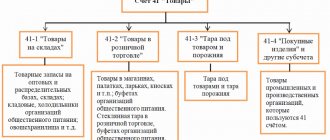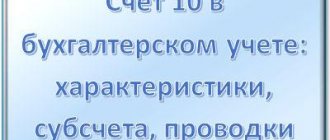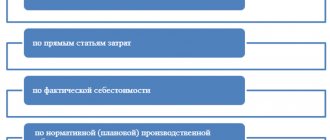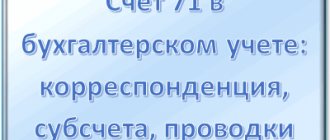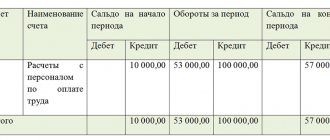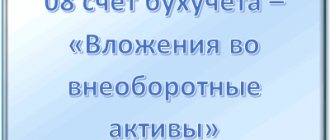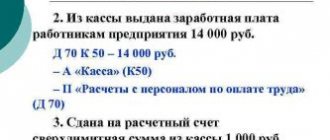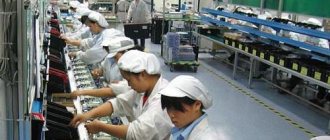Definition of fixed assets
Fixed assets of an enterprise are the material assets of an enterprise used in economic activities and transferring their value to the cost of production.
Fixed assets
The OS includes:
- production equipment and machinery;
- buildings and constructions;
- roads;
- transmission networks (heating networks, electrical networks, etc.);
- means of transport;
- power machines and equipment;
- various equipment and tools;
- working and breeding livestock;
- other OS.
In addition, fixed assets include capital investments in leased fixed assets, in land improvement, and the land plots themselves. Fixed assets, as non-current assets, participate in the production process as a means, not an object.
Conditions for recognizing an object as a fixed asset
To recognize an OS object, the following conditions must be present simultaneously:
- purpose - use in the production activities of the organization;
- expected SPI over 12 months;
- promising economic benefits;
- not intended for resale.
OS costing less than 40,000 rubles. can be taken into account as part of inventories and immediately written off as costs.
Reflection of an external correctable defect
Expenses that increase costs include:
- confirmed costs for correcting defects from the consumer;
- costs of transporting defective products;
- reimbursement of other buyer expenses associated with defective products.
If the defect is corrected by the manufacturer, it is accounted for during the correction time in off-balance sheet account 002.
| Account Dt | Kt account | Wiring Description | Transaction amount | A document base |
| 60.01 | Transport costs are included in the amount of losses from defects | 200 | Carrier invoice | |
| 10.01, , 69, | Manufacturer's expenses for correcting defects are taken into account | 800 | Help-calculation | |
| 20.01 | Costs for correcting defects by the manufacturer are included in the cost of production | 1000 |
Account 01 in accounting
The fixed assets accounting account is active, its structure is displayed in the form of a table:
In the standard version, synthetic account 01 includes subaccounts for breakdown by type of fixed assets.
To reflect disposals, a sub-account for the disposal of fixed assets is also often opened, into which the initial and written-off costs are collected, and the write-off is carried out from this account. If the disposal account is not used, then transactions Dt 02 - Kt 01 arise.
For the correctness of analytical accounting, a breakdown is carried out by objects. Items in the account are stated at their original cost, which may include shipping costs, fees, etc.
If an asset is owned by several organizations, then in the accounting of each of them its value is reflected in proportion to the share of ownership.
Main correspondence of account 01
Typical correspondence of the fixed assets accounting account is presented in the table:
OS upgrade
Modernization of fixed assets is the transformation of the operating system, which led to an improvement in its characteristics.
An increase in the cost of fixed assets due to the modernization or reconstruction of an object is reflected by standard posting:
| Dt | CT | Operation description |
| 01 | 08 | Cost increase amount |
Increase in value after revaluation:
| Dt | CT | Operation description |
| 01 | 83 | Revaluation amount |
Depreciation of fixed assets
Depreciation of fixed assets in accounting refers to the gradual transfer of their value to the cost of manufactured products.
There are categories of property that are not subject to depreciation:
- land;
- environmental management facilities;
- livestock;
- non-production housing facilities;
- forestry, road management;
- external landscaping.
If repairs last more than one year, and conservation of objects lasts more than three months, then depreciation is suspended.
In the balance sheet, fixed assets are reflected at their residual value: original cost minus accumulated depreciation. Non-depreciable property is reflected in the balance sheet at historical cost.
Depreciation starts from the month following the commissioning date. The accrual will stop in the next month after the cost has been completely written off.
After the book value of the asset becomes zero, the asset is not reflected in the balance sheet.
Correcting internal defects: what is reflected in debit and credit in postings
Repairing a defect usually involves additional expenses. What is reflected in the debit of account 28 in such situations?
You can find more complete information on the topic in ConsultantPlus. Full and free access to the system for 2 days.
Most often, the costs of correcting a defect are represented by the following costs:
- For additional remuneration for workers correcting defects.
These expenses are recorded by transactions:
- Dt 28 Kt 70 (salaries accrued to employees involved in correcting marriages);
- Dt 28 Kt 69 (contributions accrued).
- Additional raw materials and materials used for finishing: Dt 28 Kt 10.
- Ancillary services of external contractors: Dt 28 Kt 60.
It is possible that an internal corporate investigation will show that the defect was caused by the guilty actions of employees, who then compensate for their shortcomings (optionally, through deductions from their salaries).
As a rule, in such cases the following wiring is used:
- Dt 73 Kt 28 (shows a decrease in expenses for marriage due to compensation for the guilty party);
- Dt 70 Kt 73 (deduction of compensation from the employee’s salary is shown).
If it is preferable for an employee to pay for the marriage not from his salary, but from his own funds, then such payment, if made through the cash register, is recorded by posting: Dt 50 Kt 73.
All costs associated with correcting defects, at the end of the billing period adopted in the accounting policy (usually a month), are written off to the cost of production: Dt 20 Kt 28.
Subscribe to our newsletter
Yandex.Zen VKontakte Telegram
Examples of accounting entries for account 01 “Fixed assets”
Example 1. Acceptance of fixed assets for accounting
Karuna LLC in April 2020 purchased from the OS supplier the contract price of 110,000 rubles, excluding VAT. Delivery services - 10,000 rubles. The term of the fixed assets is 36 months, the method of calculating depreciation is linear. The OS will be used in the main production activities.
To reflect the acquisition and acceptance of fixed assets for accounting, the Karuna accountant makes the following entries in April:
| Dt | CT | Operation description | Amount, rub | Document |
| 08 | 60 | Reflection of OS receipt | 110 000 | Invoice |
| 08 | 60 | Reflection of delivery costs | 10 000 | Invoice |
| 01 | 08 | Acceptance of fixed assets for accounting (110,000 + 10,000) | 120 000 | Accounting information |
The monthly depreciation amount will be: 120,000 / 36 = 3,333 rubles)
Depreciation calculation in May:
| Dt | CT | Operation description | Sum | Document |
| 20 | 02 | Monthly amortization | 3 333 | Accounting information |
Which accounts does it correspond with?
To account for fixed assets, the Chart of Accounts provides for account 01. On it, funds are recorded at their original cost. The account is active, so an increase (receipt of fixed assets) is recorded as a debit, and a decrease (disposal) is recorded as a credit. Analytical accounting is carried out by types of OS objects.
By debit, account 01 can correspond with the credit of accounts:
- sch. 03 - shows the return of a fixed asset from an income-generating investment (for example, a return from a tenant).
- sch. 08 – reflects the arrival of fixed assets, an increase in their price as a result of re-equipment, completion and reconstruction.
- sch. 76 - receipt of fixed assets from other debtors, when its installation and modification are not required.
- sch. 79 - receipt of fixed assets for intra-business settlements (for example, from the parent company)
- sch. 83 — increase in the cost of fixed assets due to revaluation.
For a loan, account 01 can correspond with the debit of the following accounts:
- sch. 02 - disposal of fixed assets is reflected
- sch. 11 — transfer of fattening animals to the main herd
- sch. 76 - write-off of the cost of fixed assets due to other settlements (for example, due to insurance payments)
- sch. 79 - transfer of fixed assets through the system of intra-business settlements (between branches, parent company, etc.)
- sch. 83 - decrease in the cost of fixed assets as a result of their revaluation
- sch. 91 - disposal of fixed assets
- sch. 94 — the cost of missing OS is shown
- sch. 99 - write-off of fixed assets as a result of emergency circumstances.
Modernization
The main feature of the modernization procedure is that in the process of its implementation, the original characteristics of the objects are adjusted. As a result, the period of use and cost change. In order to properly record expenses, it is recommended to open a sub-account on account 08. All expenses that were necessary for the modernization will be collected here. The procedure is carried out in several types.
Sale
Revenue after the sale must be indicated in the reporting documents in the amount specified in the contract. This also includes all losses that went towards depreciation. All transactions must be reflected in account 91.
Liquidation
The procedure for liquidating an object is carried out if its use for the enterprise has become economically unprofitable. The fixed asset is subject to write-off. In the future, they have the right to disassemble it in order to use the resulting materials for other purposes.
Revaluation
The revaluation operation is not mandatory for the organization. But there are cases when this necessity is determined by local acts. In such a situation, the revaluation procedure will need to be carried out on the last day of the year. There are two types of revaluation possible. This can be a markdown or revaluation.
Unaccounted assets based on inventory results
All business entities are required to regularly conduct an inventory of the property on their balance sheet. This is necessary to ensure authenticity. If the inspection reveals objects that are not registered, they must be included in it in the same month. The cost will be indicated based on the current market price for similar properties.
OS shortage based on inventory results
Based on the results of the inventory, a shortage may occur. In such a situation, the company employee is responsible for the damage. If it is not determined, then it is written off as a loss. The amount is determined based on the actual residual value.
Account 01 in accounting plays an important role for the correct accounting of objects on the balance sheet of an organization, enterprise, and related to the main ones. Interaction between accounts helps to correctly track changes in their value during operation.
Account characteristics/description:
Account 28 “Defects in production” is intended to summarize information about losses from defects in production.
Analytical accounting of the account is carried out for individual divisions of the organization (sub-account “Divisions”), types of products (sub-account “Item groups”) and expense items (sub-account “Cost Items”). Each division is an element of the “Divisions” directory. Each type of product is an element of the “Nomenclature Groups” directory. Each expense item is an element of the “Cost Items” directory.
“Write-off of the cost of defects to the costs of main production”
ENTRY: Debit 20.01 “Main production” Credit 28 “Defects in production”
Which document 1 will be made in 1c:Accounting 2.0/1c:Accounting 3.0
: —
Operation (accounting and tax accounting)
in the menu “Operations — Operations entered manually”
“Write off the cost of defects as auxiliary production costs”
ENTRY: Debit 23 “Auxiliary production” Credit 28 “Defects in production”
Which document 1 will be made in 1c:Accounting 2.0/1c:Accounting 3.0
: —
Operation (accounting and tax accounting)
in the menu “Operations — Operations entered manually”
“Write-off of the cost of raw materials and supplies to correct defects”
ENTRY: Debit 28 “Defects in production” Credit 10.01 “Raw materials and materials”
Which document 1 will be made in 1c:Accounting 2.0/1c:Accounting 3.0
: —
Requirement-invoice
in the “Production” menu
“Write-off of the cost of purchased semi-finished products, components, structures and parts for the correction of defects for the correction of defects”
ENTRY: Debit 28 “Defects in production” Credit 10.02 “Purchased semi-finished products and components, structures and parts”
Which document 1 will be made in 1c:Accounting 2.0/1c:Accounting 3.0
: —
Requirement-invoice
in the “Production” menu
“Write-off of the cost of purchased semi-finished products, components, structures and parts to correct defects”
ENTRY: Debit 28 “Defects in production” Credit 10.02 “Purchased semi-finished products and components, structures and parts”
Which document 1 will be made in 1c:Accounting 2.0/1c:Accounting 3.0
: —
Requirement-invoice
in the “Production” menu
“Write off the cost of fuel to correct defects”
ENTRY: Debit 28 “Production defects” Credit 10.03 “Fuel”
Which document 1 will be made in 1c:Accounting 2.0/1c:Accounting 3.0
: —
Requirement-invoice
in the “Production” menu
“Write off the cost of fuel to correct defects”
ENTRY: Debit 28 “Production defects” Credit 10.03 “Fuel”
Which document 1 will be made in 1c:Accounting 2.0/1c:Accounting 3.0
: —
Requirement-invoice
in the “Production” menu
“Write-off of the cost of containers and packaging materials for the correction of defects in organizations engaged in production activities or provision of services”
ENTRY: Debit 28 “Defects in production” Credit 10.04 “Containers and packaging materials”
Which document 1 will be made in 1c:Accounting 2.0/1c:Accounting 3.0
: —
Requirement-invoice
in the “Production” menu
“Write-off of the cost of containers and packaging materials for the correction of defects in organizations engaged in production activities or provision of services”
ENTRY: Debit 28 “Defects in production” Credit 10.04 “Containers and packaging materials”
Which document 1 will be made in 1c:Accounting 2.0/1c:Accounting 3.0
: —
Requirement-invoice
in the “Production” menu
“Writing off spare parts to correct defects”
ENTRY: Debit 28 “Defects in production” Credit 10.05 “Spare parts”
Which document 1 will be made in 1c:Accounting 2.0/1c:Accounting 3.0
: —
Requirement-invoice
in the “Production” menu
“Write off the cost of spare parts to correct defects”
ENTRY: Debit 28 “Defects in production” Credit 10.05 “Spare parts”
Which document 1 will be made in 1c:Accounting 2.0/1c:Accounting 3.0
: —
Requirement-invoice
in the “Production” menu
“Write off the cost of other materials to correct defects”
ENTRY: Debit 28 “Production defects” Credit 10.06 “Other materials”
Which document 1 will be made in 1c:Accounting 2.0/1c:Accounting 3.0
: —
Requirement-invoice
in the “Production” menu
“Write off the cost of other materials to correct defects”
ENTRY: Debit 28 “Production defects” Credit 10.06 “Other materials”
Which document 1 will be made in 1c:Accounting 2.0/1c:Accounting 3.0
: —
Requirement-invoice
in the “Production” menu
“Write-off of the cost of building materials to correct defects”
ENTRY: Debit 28 “Defects in production” Credit 10.08 “Building materials”
Which document 1 will be made in 1c:Accounting 2.0/1c:Accounting 3.0
: —
Requirement-invoice
in the “Production” menu
“Write-off of the cost of building materials to correct defects”
ENTRY: Debit 28 “Defects in production” Credit 10.08 “Building materials”
Which document 1 will be made in 1c:Accounting 2.0/1c:Accounting 3.0
: —
Requirement-invoice
in the “Production” menu
“Write-off of semi-finished products of own production to correct defects”
ENTRY: Debit 28 “Defects in production” Credit 21 “Semi-finished products of own production”
Which document 1 will be made in 1c:Accounting 2.0/1c:Accounting 3.0
: —
Production report for the shift
in the “Production” menu
“Write-off of the cost of defects sold to the buyer “
ENTRY: Debit 91.02 “Other expenses” Credit 28 “Production defects”
Which document 1 will be made in 1c:Accounting 2.0/1c:Accounting 3.0
: —
Operation (accounting and tax accounting)
in the menu “Operations — Operations entered manually”
“Write-off (liquidation) of defects resulting from natural disasters, fires and other emergency circumstances”
ENTRY: Debit 91.02 “Other expenses” Credit 28 “Production defects”
Which document 1 will be made in 1c:Accounting 2.0/1c:Accounting 3.0
: —
Operation (accounting and tax accounting)
in the menu “Operations — Operations entered manually”
“Write-off of actual expenses for eliminating defects at the expense of an estimated liability and reserve”
ENTRY: Debit 96 “Reserves for future expenses” Credit 28 “Defects in production”
Which document 1 will be made in 1c:Accounting 2.0/1c:Accounting 3.0
: —
Operation (accounting and tax accounting)
in the menu “Operations — Operations entered manually”
